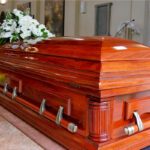
Professor Peter Piot, the Director of the London School of Hygiene and Tropical Medicine: ‘Around June it became clear to me there was something different about this outbreak. I began to get really worried’ Photograph: Leon Neal/AFP
Professor Peter Piot has a long list of accomplishments:
- Director of the London School of Hygiene and Tropical Medicine
- Professor of Global Health
- Chair of the MRC Global Health Group
- Member of the MRC Strategy Board.
- Member of the Board of the Global Health Innovative Technology Fund in Tokyo
- Member of the Oxford Martin Commission on Future Generations
But in 1976 Piot was a young Scientist working in a research lab in Antwerp. As part of their work, Piot and the rest of the team discovered the Ebola virus.
In a recent article published in The Guardian, Rafaela von Bredow and Veronika Hackenbroch detail a conversation they had with Piot where he discusses his Ebola work.
Professor Piot, as a young scientist in Antwerp, you were part of the team that discovered the Ebola virus in 1976. How did it happen?
I still remember exactly. One day in September, a pilot from Sabena Airlines brought us a shiny blue Thermos and a letter from a doctor in Kinshasa in what was then Zaire. In the Thermos, he wrote, there was a blood sample from a Belgian nun who had recently fallen ill from a mysterious sickness in Yambuku, a remote village in the northern part of the country. He asked us to test the sample for yellow fever.
These days, Ebola may only be researched in high-security laboratories. How did you protect yourself back then?
We had no idea how dangerous the virus was. And there were no high-security labs in Belgium. We just wore our white lab coats and protective gloves. When we opened the Thermos, the ice inside had largely melted and one of the vials had broken. Blood and glass shards were floating in the ice water. We fished the other, intact, test tube out of the slop and began examining the blood for pathogens, using the methods that were standard at the time.
Read the full story: ‘In 1976 I discovered Ebola – now I fear an unimaginable tragedy’









